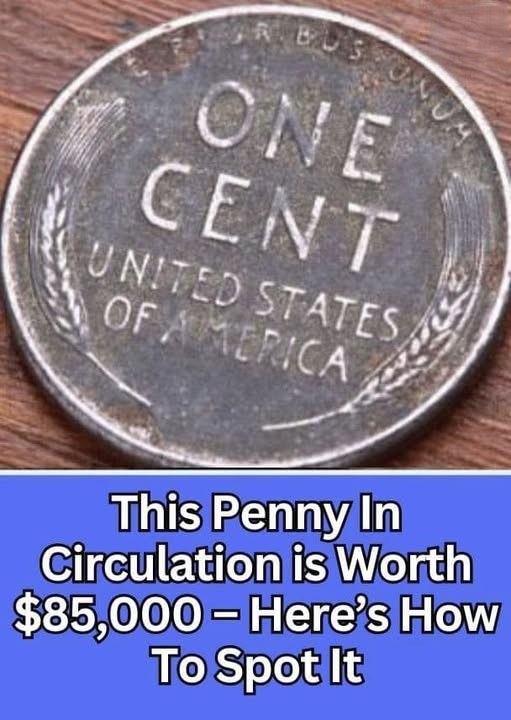For most people, pennies are an afterthought—tossed into jars, glove compartments, or change trays without much notice. Yet, some of these small coins carry incredible stories and, in very rare cases, extraordinary value. One of the most fascinating examples in American history is the 1943 copper wheat penny, a coin so rare that it has sold at major auctions for tens of thousands of dollars. Its existence proves that even the most ordinary-looking pocket change can sometimes hide a remarkable piece of history.
How the 1943 Copper Penny Came to Be
The origins of this rare coin trace back to World War II. At the height of the conflict, the United States Mint made an important decision: copper, a critical material for ammunition, shell casings, and other military supplies, would no longer be used for pennies. Instead, the 1943 penny was struck from zinc-coated steel, giving it a silvery color and a magnetic quality that set it apart from the familiar copper cents Americans had used for decades.
However, during this transition, a few copper blanks left over from the 1942 production cycle accidentally slipped into the presses. These planchets were struck into pennies before anyone noticed the mistake. The result was a tiny batch of copper coins dated 1943—coins that were never supposed to exist. Because of this accident, the 1943 copper wheat penny became one of the most legendary rarities in numismatic history.
Why These Pennies Are So Rare
Billions of steel cents rolled out of the mints in 1943, but experts estimate that fewer than 40 genuine copper examples survive today. They were produced across different facilities—Philadelphia, Denver, and San Francisco—but in extremely limited numbers. This combination of scarcity and historical background has elevated the coin to near-mythical status among collectors.
The Value of the 1943 Copper Penny
The market value of these coins depends heavily on condition. A pristine, uncirculated 1943 copper penny in “mint state” can bring bids of up to $85,000 or more at auction. Circulated coins—those that clearly passed through everyday use—still often sell for $60,000 or higher. Even a lower-grade specimen can represent a once-in-a-lifetime discovery for someone who finds one in an old collection or family keepsake box.
Counterfeits and How to Spot Them
Because of its fame, the 1943 copper penny has also been widely counterfeited. Some scammers try to alter ordinary 1948 copper pennies by shaving down the “8” to resemble a “3.” Others coat standard 1943 steel pennies with copper to fool casual buyers. These forgeries circulate frequently and can lead to costly mistakes for inexperienced collectors.
Fortunately, a simple test can help. A steel penny is magnetic, while a genuine copper penny is not. If a 1943 coin does not stick to a magnet, it may be worth closer examination. Even so, experts strongly recommend having rare coins authenticated by professional grading services or trusted coin dealers before assuming they are genuine.
More Than Money: A Piece of History
The 1943 copper penny is not only valuable because of its rarity—it also carries deep symbolic meaning. It reflects a time when even the smallest everyday resources were redirected to support a nation at war. To ordinary Americans during the 1940s, the disappearance of copper pennies was a reminder of sacrifices being made overseas. For collectors today, owning one of these coins is like holding a tangible piece of that wartime history.
Why People Keep Looking
Stories of surprising discoveries continue to emerge. Some people stumble upon rare coins at estate sales, flea markets, or tucked away in old coin albums passed down through generations. The idea that something as small as a penny could hold the value of a car or even a home keeps collectors and casual hobbyists hopeful.
Even if you don’t own a 1943 copper penny, checking your change or coin jars can still be worthwhile. Many older pennies—though not as rare—carry modest collectible value, and the process of searching for them can be both fun and educational.
A Legacy Hidden in Plain Sight
The 1943 copper wheat penny is a reminder that history often hides in unexpected places. A simple oversight during production more than 80 years ago created one of the most iconic treasures in American numismatics. Today, the handful of surviving examples continue to inspire curiosity and excitement among collectors.
So the next time you sift through loose change or roll pennies for the bank, take a closer look. You may not uncover a life-changing rarity, but you just might discover a fascinating piece of history resting quietly in the palm of your hand.



